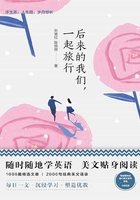
■酒文化
Wine Culture
Sniffing the Cork
What are you expected to do with the cork that has just been removed from a wine bottle, and handed to you by the sommelier? Are you expected to just throw it away or, like many other people to sniff it? As wine experts point out, it is really pointless to sniff the cork; after all, a cork smells of a cork. It is the wine itself you want to smell. So what you are supposed to do it to check its condition and authenticity. An authentic[37] cork is one that has been placed in the bottle at its place of origin. As to the condition of a wine cork, what you look for is its moistness which indicates that the wine has been stored properly, for the constantly wet cork expands and thus prevents the air from entering. A dry or crumbly cork indicates that air has very likely seeped in, which can damage the best of vintages and very often a decayed cork will spoil the wine. Of course a moist cork doesn’t necessarily guarantee a high quality in the wine, and the only defect you are likely to pick up from sniffing the cork is vinegarization.
名人语库
~Felix Frankfurter
——费利克斯·法兰克福
瓶塞
服务员从瓶中拔出来递给你的软木塞,能用来做什么呢?你是就那样丢掉它,还是像其他许多人一样,用鼻子嗅一嗅?调酒专家指出,嗅木塞确实没什么意义;毕竟,软木塞闻起来就只有软木塞的味道。你想嗅的其实是酒。你要做的只是检查它的状态和可靠性。可靠的软木塞是一开始就要放进瓶子里的。而对于瓶塞的状态,你要看的则是它的湿度,湿度能表明酒的储藏方式是否正确。软木塞不断散发着湿气,就能阻止空气进入。而如果软木塞又干又脆,则说明空气很可能已经渗进去了,一旦空气渗进去,酒的品质就无法得到保障,而腐烂的软木塞还会毁掉酒。当然,湿润的软木塞不一定就能保证酒的品质,而你通过嗅瓶塞能找出的唯一缺点就是发酸。
Letting the Wine Breathing
Wine experts tell you that a bottle of wine should be opened an hour or so before you drink it to allow any sediment in it to settle and to aerate it—that is, to let the wine absorb oxygen or “breathe”. Wine experts also say that this applies only to red wines and especially to those of over ten years old.
All of these practices have their own reasons. It is obviously a sound idea to allow the sediment in the wine to settle before you drink it, unless you like the dregs clinging[38] to your teeth. Apparently oxygenation improves the bouquet of some wines because it releases the esters, ethers and aldehydes, which give the drink its particular smell. That’s why it is advisable that you decant the wine before serving it and swirl the wine before tasting it. Decanting is critical here, for unless you pour the wine out of its narrow-necked bottle into a wide-mouthed container, the amount of the wine surface that can actually come in contact with the air will be negligible.
Clinking Glasses
With clinks of glasses, cheers and toasts, the banquet reaches its climax. There are two explanations regarding the origin of clinking glasses. The first one dates the custom from the late seventeenth and early eighteenth centuries. English sympathizers with the exiled Stuart royal family drank secret toast to the family by passing their glasses over finger bowls. By doing so they meant that even though the words of the toast went to the monarch in power, their hearts were with the one “over the water”. When finger bowls were banished from English tables to discourage the practice, the Stuart champions passed their glasses stealthily over each other or clinked them together gently.
The second and also the most convincing explanation is that the custom is a survivor of an ancient “mutual trust” cermony. In the days of frequent
醒酒
品酒专家说,要在喝酒之前1小时左右将酒瓶打开,让它的沉淀物沉淀下来,再让它透透气——也就是说,让酒吸收氧气,或者说让它“呼吸”。专家还说,这种做法只用于红酒,尤其是那种10年以上的红酒。
这一切自有其中的道理。在喝酒之前,让它的沉淀物沉淀下来,很明显,这听起来就是一个不错的主意,除非你希望那些沉渣粘在你的牙齿上。显而易见,通过氧化,可以增强一些酒的香味,因为它会释放出酯、醚和醛类,而酒的特殊味道正是源于这些物质。因此,上酒之前,要将酒倒入另一种容器,而且,喝酒之前还要摇一摇。此处并不提倡将酒倒入另一种容器,除非你是从瓶颈狭小的容器倒入大口的容器,如此一来,酒面所接触的空气量也就微不足道了。
碰杯
碰杯的声音、欢呼声和祝酒词能将宴会推至高潮。就碰杯的起源来说,就存在着两种解释。第一种可追溯至17世纪末18世纪初。当时,斯图亚特王室家族流亡在外,那些同情他们的英国人将杯子掠过洗指碗(译者注:饭桌上用于洗手指的碗),悄悄和他们碰杯。他们这样做,意味着即便这件事传到掌权的君主耳朵里,他们的心也和“水上”的人在一起。后来,洗指碗被撤出了英国的餐桌,这个办法就不可行了,于是斯图亚特家族的人们就暗地里将杯子掠过对方,或是轻轻地碰一下杯。
第二点,也是最有说服力的解释,就是这种风俗源自古代的“互信”仪式。在中毒事件频发的时代,即便是在朋友之间,饮酒的人也会将自
occurrence of poisoning, even among friends, drinkers would pour a little of their wine into each other’s glasses, to ensure that neither had poisoned the drink. Today drinkers still touch the rims but try not to splash their wine over for there is no longer mutual suspicion. They clink glasses for the sake of friendship and enjoyment.
Steps to Taste Wine
The three main categories which are to be examined during the wine tasting areappearance, its aroma, and the taste. It is important that you need to look into the wine, smell it and then in turn taste.
The first step in the wine tasting is the visual appearance, it is important that you do use a long stemmed wine glass without any scenic patterns on it which distract its appearance. Fill in the glass about one third. Pick it and examine on the shade, concentration and the clarity. With time red wines become light in color and on the other hand the white wine darkens in shade. The wine has to be clear and not cloudy like a beer. Swirl the wine into the mouth and just look on to the bubbles along the side of the glass; these bubbles indicate the level of alcohol content. The more the formation of bubbles then more is the concentration of the alcohol.
The next step is to smell the wine, hold the glass near your nose and in turn register the smell. It is important that you do smell the wine deeply so that it reaches your olfactory lobes where the smell gets registered. Various aromas plunge from the wine like those of the flowery, fruity and herbal.
The next is the best part of sipping the aromatic wine on to your mouth wherein it is important that you do not swallow the wine directly, but roll the wine directly on to mouth and in turn feel the various flavors which are present in the wine. Thus the simple process of wine tasting gets over with the three steps of look, smell and sip.
己酒杯里的酒洒进别人的杯子,确保大家都没往酒里下毒。今天,喝酒的人也会碰到酒杯边缘,但不会让他们的酒洒出来,因为人们不再相互怀疑。后来,人们就为了友谊和欢乐而碰杯。
品酒
品酒要品三个方面:酒的外观、香气和口感。更重要的是,你首先要观察葡萄酒的颜色,然后再品尝。
品酒的第一步是视觉外观:使用一个纯净的高脚杯,确保你的注意力不被分散。品酒时应装满玻璃杯的1/3左右,然后端起玻璃杯,观察它的阴影、浓度和清晰度。随着时间的推移,你会发现红葡萄酒的阴影颜色变淡了,而白色部分的阴影部分变深了。葡萄酒应该要清澈,而不像啤酒那样朦胧;那些泡沫则说明了酒精的含量。形成的泡沫越多,就说明酒精的浓度越高。
第二步是品葡萄酒的气味:将玻璃杯凑到你的鼻子下面,然后记住它的气味。你要深深地闻,使气味到达你的嗅叶,这样你才能记住它。许多酒散发出的气味像花香、果香和芳草香。
第三步是把芳香的酒放到嘴边呷一口,但你不能直接吞下去,而要用舌头卷住酒,直接把它送进嘴里,然后再体味葡萄酒中蕴含的各种味道。这样一来,品酒的三步——看、闻、呷也就完成了。